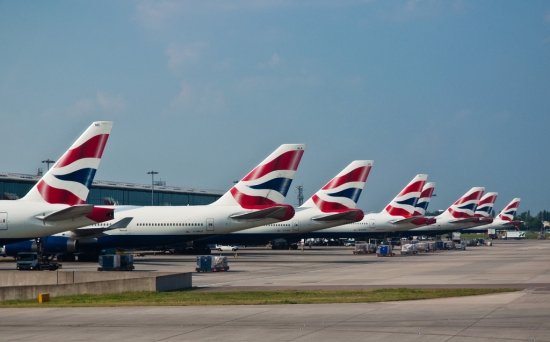Last summer’s poor weather had a knock on effect in many areas of the UK economy. Drowned crops failed to produce a good harvest leaving both farmers and supermarkets with added costs. In addition widespread flooding led to many businesses being forced to shut down for a few days so damage to commercial properties could be assessed.
However, it seems that one particular business profited from a year of generally miserable weather. Despite the number of Britons who wished to stay in the country for London’s summer of sport, Heathrow Airport still managed to achieve a record footfall for 2012.

Throughout the year, staff at Britain’s largest commercial airport handled 70 million passengers thanks to a combination of larger planes and cheaper offers to areas affected by the Eurozone crisis. This rise in passenger numbers equates to a 0.9 per cent increase on traffic in 2011, with the most successful routes being those to the Far East and Americas.
Flights to China proved to be especially popular in the last month of 2012, with a boost of 23 per cent when compared to the previous year. This contributed greatly to Heathrow being able to post December as a record breaking month in terms of passenger footfall.
North Atlantic flights also proved to be popular, posting a growth of 3.2 per cent across the year. With the Eurozone still in an uncertain position, many international businesses based in the United States are choosing to trade with British companies rather than risking an unstable business deal, making trans-Atlantic aviation a more necessary industry than ever before.
Chief executive of Heathrow Airport, Colin Matthews, is proud of the steps his airport has taken in the past year to ensure a high quality of travel for the millions of passengers passing through its terminal buildings.
He said; “The figures for 2012 show Heathrow is delivering higher passenger numbers despite a tough economic climate.
“At the same time, passenger satisfaction levels reached record levels.”
Heathrow has been somewhat embroiled in controversy this year as industry experts claimed it no longer has the capacity to operate as the UK’s main hub airport. Suggestions have been put forward to shift the focus from Heathrow by building additional runways at either Stansted or Gatwick, or even building an entirely new, larger airport in the centre of the capital city – a plan backed by London Mayor Boris Johnston.
Yet Heathrow is responding to the challenge. The much anticipated Terminal 2 building is due to be completed in 2014, which will greatly increase the number of passengers the hub can cope with on an annual basis. However, this does not allow for a greater number of flights to be scheduled due to runway limitations – something critics argue must be resolved should the UK wish to rival our European neighbours in Amsterdam and Paris in the field of long distance travel.
Previous Post
Iconic British Mini to be Manufactured in Holland